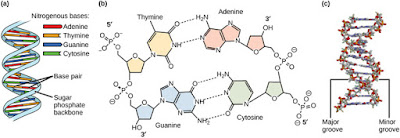This week I'll write about a topic that is very important for science and that overdosed boom in recent years. The process of producing similar populations of genetically identical individuals that occurs in nature when organisms such as bacteria, insect or plants reproduce asexually, is called cloning. There are different types of cloning: molecular, cellular, organismal naturally, artificial, reproductive, therapeutic, replacement generation and extinct species. Today I will focus on the molecular, cellular, organismal naturally and reproductive cloning. Now I will explain each of these types of cloning.
Molecular cloning is the process of making multiple molecules, commonly is used to amplify DNA fragments containing whole genes and also can be used to amplify any DNA sequence such as non-coding sequences, promoters and randomly fragmented DNA. Cellular cloning is when is derived a population of cells from a single cell. Then in nature some plants and single-celled organisms, such as bacteria, produce genetically identical offspring through a process called asexual repoduction. Furthermore, natural clones occur in humans and other mammals. The identical twins are produced when a fertilized eggs splits, creating two or more embryos that carry almost identical DNA.
Finally, reproductive cloning is also known as somatic cell nuclear transfer. It is a technology used to generate an organism that has the same nuclear DNA as another organism. The genetic material of the core is transferred from a differentiated and donor adult cell to an egg or enucleated egg. When electroporation (electric shock) or chemical treatment (ionomycin) is used, the pores open and the DNA enters to enucleated egg.Too, the cell is stimulated to divide. Once the appropiate time acquires embryo is transferred into the uterus of a female until birth.
An example of this type of cloning is Dolly the sheep. This sheep was the first mammal cloned in this way. Dolly was cloned on February 27, 1997 by Ian Wilmut. She died on February 14, 2003 because developed lung cancer, arthritis and weak inmune system. In the case of Dolly the genetic marker was the color of th head of sheep that donated the egg. In addition, other cloned animals like Dolly were goats, cows, mice, cats, rabbits and gaur. In 2001 the first animal cloned endangered (gaur). This animal died forty-eight hours after infection. And in Italy was cloned a type of wild sheep (mouflon) who still lives.
Most of this information was obtained from https://en.wikipedia.org/wiki/Cloning and https://www.genome.gov/25020028
The example of Dolly and the information below of the example was obtained from my genetic class that I took on spring semester of 2015 (January-May).








































